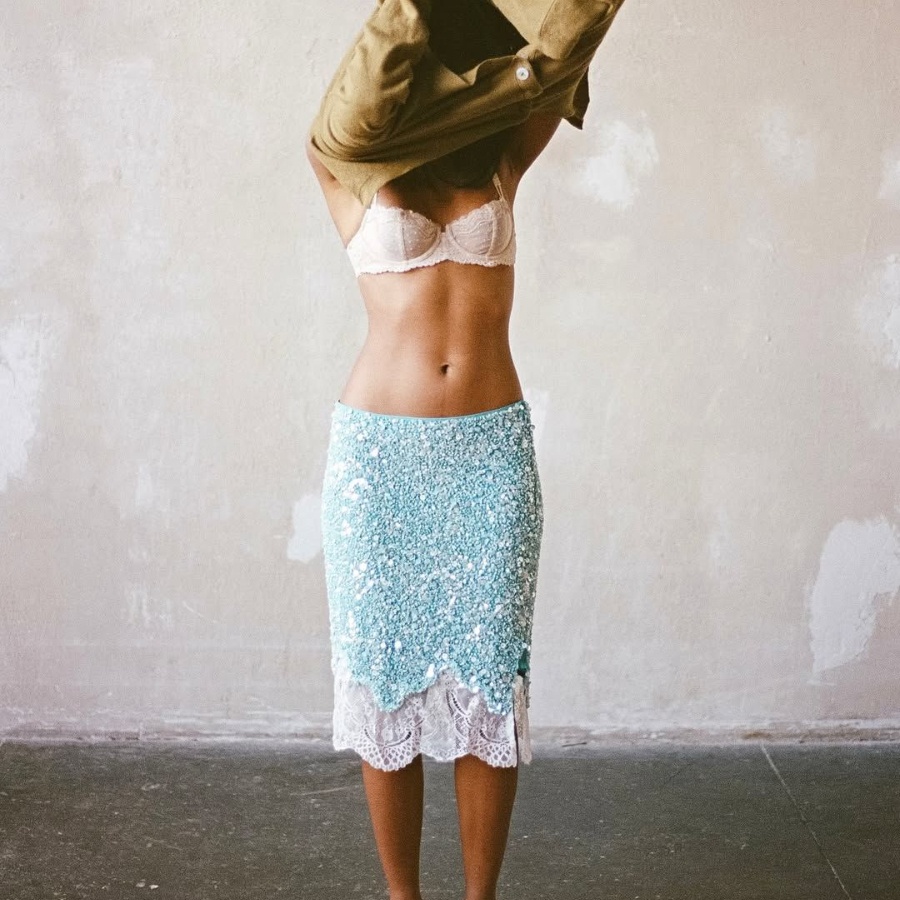Take a look into the wardrobes of Selena Gomez, Janhvi Kapoor, Natasha Poonawalla, Ashley Park or any other young and leggy fashion girl, and you will notice that the cocktail mini dress has returned in a way big. The look is new, the hemlines are shorter and the dress itself, starkly contrasting from its previous iteration. Behold the intricate cocktail mini—handcrafted by homegrown designers using decidedly Indian detailing.
Gomez and Park were both seen in Rahul Mishra’s nature-inspired 3D creations from his couture line, the former’s outfit even featuring a motif of a tailor from the designer’s atelier. Poonawalla was drenched in a show-stopping waterfall of pearls by Abu Jani Sandeep Khosla for the Ambani family’s Jamnagar gala. And Kapoor’s form-fitting number for the same event was made using Gaurav Gupta’s signature glass embroidery.
And these are just a few names that suggest homegrown designers are ready to upgrade the ubiquitous party staple with their craftsmanship. After all, limiting Indian handwork to traditional silhouettes is a kind of pigeonholing that has no place in 2024. “We’ve seen international brands take inspiration from Indian embroideries for decades now. But homegrown designers haven’t been actively exploring our techniques in a western context. It’s predominantly limited to wedding clothes or contemporary Indian wear. There are so many possibilities beyond that,” says stylist Edward Lalrempuia. It’s true, splashing indigenous details across a universally loved party mini adds a new dimension to the conversation on the borderless (and timeless) appeal of our centuries-old craft techniques.
Runway spotting
Even bridal favourite Sabyasachi is in on it. The designer’s New York edits never skips the embellished minis, the styles accented with heritage embroideries and original prints created by The Sabyasachi Art Foundation. Then there’s design doyenne Ritu Kumar, who is using zardozi and kashida to give the silhouette a bohemian spin. In her last runway showcase, the lineup featured cutwork minis paired with long-embroidered jacket and lace-up boots; looks that will be right at home at cocktail parties, whether in Mumbai or Manhattan. Anita Dongre’s Rewild ’23 collection offered a more traditional approach to a classic shift dress, in which the pieces are dressed up with cord embroidery, gota work, and motifs inspired by Rajasthani palace frescoes. “These were added to the collection very consciously,” admits Lalrempuia, who styled the show. “It wasn’t about making it trendy. We wanted to show our customers how to wear these crafts in a different setting like a party. It was a way to break clichés and push the boundaries of what we can do with our heritage.”
Delhi-based designer Rimzim Dadu, on the other hand, used an ancient craft to inspire the fabric that has become a leitmotif for her brand. “One of our signature textiles is made with steel wires in a modern translation of the age-old craft technique of dori work. We then sculpt it around the human form to create mini dresses among other things,” the designer explains.
A dress that travels
For many Indian designers, this artisanal makeover of a typically western silhouette is also a bid to target a more global audience. But the unabashed use of traditional know-how and embellishment makes this a seamless meeting of two worlds, and a very chic one at that. “We are living in an era where we have equal exposure to our indigenous crafts and global aesthetics. It was only a matter of time before the two worlds collided to create this fusion that is fresh and so unique,” adds Dadu.






